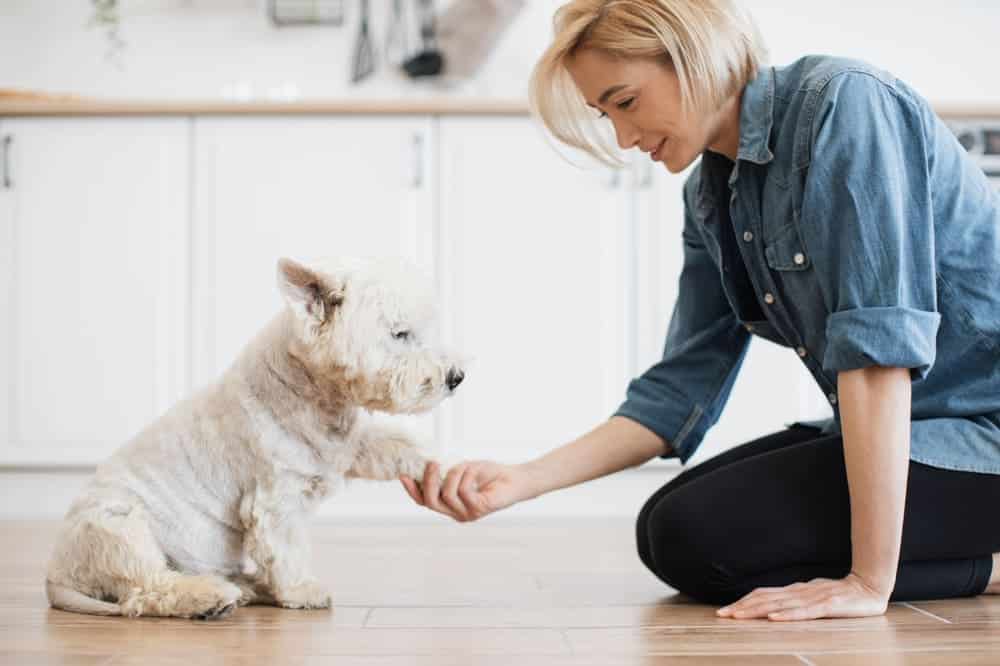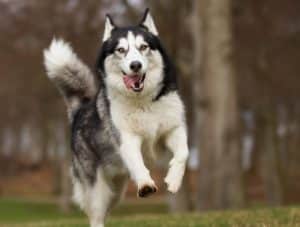Most people greatly value their dog, who is an integral part of the family. That said, not all moments spent with him are necessarily enjoyable as long as your dog is not properly trained to behave in the right way or to avoid undesirable attitudes.
Here’s a breakdown of why obedience training is vital for a happy, well-adjusted dog, how to teach basic commands, and dealing with a stubborn pup. Plus, key takeaways from the provided text:
Why Obedience Training Matters
- Safety: Commands like “come” and “stay” can protect your dog in dangerous situations.
- Good Manners: Obedience helps dogs be polite around guests and in public, making life easier for everyone.
- Mental Stimulation: Training challenges your dog’s mind, preventing boredom and destructive behaviors.
- Stronger Bond: Training builds communication and trust, deepening your relationship with your dog.
How to Teach Basic Commands
- Start Simple: Begin with commands like “sit”, “stay”, and “come” in a quiet, distraction-free area.
- Positive Reinforcement Rules: Use treats, praise, and affection to reward desired behaviors.
- Keep it Short and Sweet: Brief training sessions (5-10 min) keep your dog engaged.
- Be Patient and Consistent: Dogs learn at their own pace. Use the same commands and rewards every time.
Dealing with a Stubborn Dog
- It’s Not About Stubbornness: Dogs who don’t obey may not understand what’s expected or lack motivation.
- Patience is Key: Training takes time and repetition.
- Be Clear and Consistent: All family members must enforce the same rules to avoid confusing your dog.
- Find What Motivates Them: Experiment with different treats or toys to find your dog’s favorite reward.
- Start Easy and Build Up: Begin training in low-distraction environments, gradually increasing difficulty.
Additional Tips
- Leash Walking is Key: Teach your dog to walk politely on a leash for enjoyable outings.
- Make Praise Timely: Immediate praise or a clicker sound the instant your dog does the right thing is crucial.
- Don’t Get Frustrated: Take breaks if you or your dog get upset. Training should be fun!
Key Takeaways
- Obedience = Happy, Safe Dog It provides the foundation for good behavior at home and out in the world.
- Every Dog Can Learn With patience and the right approach, any dog can master the basics.
- Focus on the Positive Rewarding good behavior is far more effective than punishment.
- Training is a Journey Learning takes time. Celebrate the small wins along the way!
Why Obedience Is Important?
Obedience exercises are important for all dogs. How are you going to take him for a walk if he doesn’t come back when you call?
How are you going to get him to sit and stay seated when asked? But, the benefits of obedience training go beyond teaching your dog to behave well, training also provides mental stimulation and physical exercise.
Best Tips for Obedience Training:
To succeed in this learning, it is important to keep in mind the key principles of dog training. You’ll find lots of details about this in the Dog Training Tips section to make your life easier, but here’s a quick summary:
Choosing a Training Location:
A deserted area that is already familiar to the dog is a good place for training. During training, the owner remains alone with the pet so that there are no distractions. If the owner has chosen an unfamiliar place, the pet must first sniff the surrounding area thoroughly to make sure there is no danger.
Positive Reinforcement:
Most trainers and veterinarians agree that positive reinforcement is the best way to train dogs. In other words, it’s about rewarding good behavior and ignoring, or transforming, bad behavior.
Avoid Punishing Your Dog:
Again, the consensus is that punishing your dog won’t work and may even make him fear you.
Keep Sessions Short and Sweet:
Training sessions should be fun for you and your dog and it is best if they are quite short.
Use Treats:
Dogs are smart enough to learn and pick up the behaviors you want them to do. They also have enough intelligence to remember what they are allowed to do without problem.
If you’re wondering how to train your dog for a specific behavior, one of the most effective ways to do so is to reward him with a treat, praise him or give him affection.
Minimize Distractions:
When you begin training your puppy or dog, you are more likely to be successful if you do it in a quiet place without distractions. After all, you want your furry friend to give you their undivided attention!
Be Clear and Consistent:
It is important that your dog clearly understands what is allowed and what is not. This means that all members of the family must follow the same rules. For example, if you don’t let your dog get on the couch and your partner does, your dog will be confused!
Be Patient:
Your dog is a unique individual with a unique temperament and will learn things at his own pace. With this in mind, try not to worry if he seems to be taking longer than expected to ‘figure out’ certain things in his training.
Don’t Forget About Socialization:
To be a ‘good dog’, it’s not enough to do what you’re asked, even if it’s important. You want your puppy or dog to get along well with other dogs and humans, and to be able to cope with different situations. Socialization: a world to discover, one paw at a time contains many useful tips.
How Teach Your Dog Basic Commands?
The five basic commands every dog should know, according to most professionals, are: “Come,” “Heel,” “Sit,” “Stay,” and “Down.” When you teach your dog a new command or trick, remember that he has the attention span and intelligence of a two-year-old child.
Your workouts should therefore be short and precise. Limit them to 15 minutes and focus on one task or behavior at a time, to avoid confusion.
Make sure you always use the same command for a desired behavior. If you use the same word every time you say it but put it in a different sentence, your dog may not understand it.
For example, if you’re trying to teach your dog to lie down, you may confuse him if you say “Down” the first time and then say, “Falcor, lie down” later in the day, or you won’t get it. no treat,” because he might not know how to interpret it.
Sit:
According to the American Kennel Club, the prerequisite for teaching your dog the “sit” command is that he stays standing in front of you.
If he doesn’t come to you spontaneously, slowly approach him and guide him with the leash to get him to come where you want him. In this way, you make your four-legged companion understand that he must obey you, without being too strict with him.
To teach your dog the “sit” command, there are two methods available to you. Choose the one that speaks to you the most:
Method 1: As a reward, kneel in front of your dog and hold out a treat. Say “sit” to your dog while you carefully lift the treat just above his head, directly in front of his nose.
Going forward, chances are likely he’ll sit with his head turned to the ceiling whenever you say “sit.” If he retreats, put a gentle hand on his back and force him to sit. Regardless of whether he requires assistance to complete the dog obedience practice, consistently give him a treat.
Method 2: Sit directly in front of your dog, place one hand on his chest and the other immediately behind his back legs. Say “sit” and gently press against his chest to bring him into a sitting position. As soon as he sits, reward him with a treat.
Down:
You also have two options for teaching your dog the “down” command. Choose the most consistent for you:
Method 1: Teach your dog that you must kneel to his right, put your left hand on his shoulders, and lie down on command. Then put your right hand directly in front of its legs.
Put gentle pressure on his shoulders and say “down.” Your dog will eventually lie down if you slide his front legs. Give him a little back rub to ease his tension and motivate him to hold this posture.
Give him some praise and reward him. Make use of a keyword that indicates the exercise’s conclusion.
Give your dog a pat on the back and another treat when he gets up. You should repeat the technique multiple times to get your dog back to the lying posture. Your dog will now assume this posture as soon as you give him the command.
Method 2: Place your left hand on your dog’s shoulders while you present a treat with your right hand in front of his mouth. Say “down” and slowly place the treat on the ground, between his paws. Then, slowly pull it forward so that it moves away from your dog. As soon as your dog lies down, let him eat the treat.
Stay:
This canine obedience command aims to make your dog stay in his position until you say the keyword to end the exercise or decide to take him for another turn.
The orders you give to your dog must be clearly delimited by a beginning and an end, both of which are clearly perceptible to your companion.
Do not perform this exercise with food in your hand. This would only encourage your dog to follow you so that you give it to him.
Train your dog to succeed in this command by going away and saying the keyword as soon as you return. If you feel like your dog is going to abandon the position, repeat the “stay” command.
Come To Me:
Hearing the command “Come to me,” the pet must rush to this call with all its paws. The team will protect the puppy from many troubles that await him on the street.
The baby will not run away to a dangerous distance, will not get hit by a car, or run into adult and aggressive dogs.
To make the puppy run to the call with pleasure, you can interest the baby with a treat or toy. The main thing is that the approach should evoke positive associations in the puppy.
When the dog is unable to follow a command, a long-leash roulette will come to the rescue. To do this, you need to say “to me” again and pull the pet in your direction.
Another trick: when the puppy does not respond to the call, you can run away from him. He will get scared and run after you. At this time, it will be useful to talk about his actions several times with the command “come to me.”
How to Make Your Stubborn Dog Obey?
Start by getting the idea out of your head that your dog is stubborn. If the training is done well you know how to make yourself understood and you know what motivates your dog. Then he will obey.
We ask and expect a lot from our dogs. We even expect our dogs to understand all the rules and boundaries from the first days they arrive in our home.
Even with our language skills, you or I would need time to adapt to a new environment, a new family. Dogs also need time to adjust. This does not mean that we must find excuses for their bad behavior, but simply that we will have to question ourselves. So, see below how to obedience training your dog.
Be Patient:
Be patient when training your dog. He needs time to first understand what you want from him. Then it becomes habitual and easy. They say it takes 21 days to change a habit, even if it’s not an exact number, learning works in a bit the same way: it takes time.
This is even more true for all the rules you want to establish that are not natural for your dog. Like walking on a leash, doing your business only outside, not chasing the cat.
Be Consistent:
Let’s take the case of a dog that jumps on guests who come to your house. If you systematically ask your dog to go to his place when people arrive at your house and reward this behavior, it’s a safe bet that your dog’s jumping will decrease.
But aside from that, if your partner, when he comes home from work, celebrates your dog and invites him to put his paws on his shoulders or something. Without necessarily intending it, it reinforces the behavior of jumping.
This is valid for all other behaviors. It is therefore important that all members of the family and even all people in contact with your dog agree on what is allowed for your dog and what is not. This way you can all work to reinforce the desired behavior.
Calm Down First:
It is best to start teaching your dog new commands at home, in a quiet place where you can control the environment. Imagine a young child, in primary school, trying to learn his multiplication tables, with other children running and playing around him. It will be difficult for him to concentrate.
Your dog’s education will be more likely to be successful if you allow him to understand commands calmly at first. Once he understands and you have found what motivates him to obey, you can take him to your yard, or a fairly quiet street. And gradually increase the stimulation.
Repeat, Repeat, Repeat:
You will need to repeat each exercise a large number of times to be sure that your dog understands it well. Initially, you will have to guide your dog to make him understand, then you will simply give him the order and he will have to carry it out.
You can then reward him. You must obtain perfect obedience in calm before moving on to more complicated ones. But you’re going to have to repeat, repeat, repeat a lot of times.
I can’t give you an exact number, but if you work daily with your dog, planning a week of quiet exercise before going on to the most complicated part isn’t crazy. Your dog may need less time or maybe more. It’s up to you. But know that we don’t waste time by skipping steps.
Walking On A Leash In Dog Training:
Leash walking is one of the essential basic exercises for training a dog. Teaching your dog to walk calmly alongside you, without pulling on the leash, is a fundamental behavior. Start with short sessions and use positive reinforcements, such as treats or praise, to reward times when your dog walks correctly.
Gradually increase the duration and complexity of your walks to improve your dog’s concentration and control.
Integrate basic commands into the game, like “return” or “drop,” to reinforce learning while having fun. Be sure to maintain clear rules and control excitement during play to avoid unwanted behavior.
How to Praise a Dog Correctly?
The dog will associate a treat and reward with affection (voice, stroking) with correct behavior only if the reward occurs at the time the command is executed.
The main mistake is to praise with a delay, during which the pet performed some action not related to the command.
For example, the command “Come to me” is practiced: the dog should receive a treat on the way, as soon as it is at the owner’s feet. Incorrect – the dog came up and sat down (or turned around at his feet).
In this case, the pet can associate the reward with its last action (twirling at the feet, sitting down, leaning its front paws on the owner’s legs, licking the palm, etc.).
When practicing some skills, it is impossible to praise the dog right away. In such cases, use a clicker – a small clicking keychain. First, the dog is taught to click (click – they gave something tasty, click – they gave it something tasty, without any).
Conclusion:
In conclusion, exercises play a crucial role in training a dog. Walking on a leash, collars, or harness, sitting, recall and intelligence games are essential exercises for beginners.
Remember to be patient, consistent, and positive throughout the learning process. Reward good behavior and avoid punishment. Remember that every dog is unique, so tailor exercises to their specific needs.
By investing time and energy in training your dog, you will establish a strong and harmonious relationship with your canine companion. If you encounter difficulties, do not hesitate to consult a professional dog trainer who can provide personalized assistance.
FAQ:
Q. Is my dog too old for obedience training?
It’s never too late to train a dog, whether you adopt them from a shelter or are simply looking to brush up on a few concepts. And you’ll probably find that your dog has a longer attention span than most puppies.
Previously, it was advised not to attempt to train a puppy until it was at least six months old, but many trainers and veterinarians now believe you can start much earlier, around two months old. Since good breeders do not take a puppy away from its mother before this age, you can begin training almost immediately.
Q. What equipment do I need for obedience training?
You don’t need a lot of expensive equipment and these basic items should suffice:
- A leash is also an essential accessory for training your dog, according to the recommendations of the American Kennel Club. Get your dog used to enjoying wearing his collar and being connected to his leash.
- A long-distance leash
- A harness
- At the same time, you can pronounce a specific word. According to critics of the clicker, the use of words further strengthens the bond between a dog and its owner. In the world of dog training, such as within the American Kennel Club, the clicker is a very frequently used accessory. Clicker training is a method based on the principle of positive reinforcement, which is based on scientific foundations. With the clicker, make your dog understand what you expect from him. The clicker is a dog training accessory that emits a special sound as soon as you click on the button.
Q. Is clicker training a good way to train obedience?
Clicker training is a popular method of training that uses a small plastic box that you click every time your dog obeys you.
The click is followed by a reward so your furry friend learns that good behavior means good things. Do you want to know more? Visit the How to Clicker Train a Dog page.
Q. Are obedience classes worth it?
You can train your puppy or dog with the assistance of a good dog obedience school if you can afford it. Naturally, not every course is made equal, so it’s critical to conduct research before enrolling in one. You can ask local dog owners and veterinarians for recommendations in addition to reading internet reviews.
Q. If my dog ignores me, what should I do?
It can be hazardous and extremely frustrating when your dog ignores you. Is your dog receiving enough mental and physical stimulation? Is he under pressure?
Do you and other members of your household have different rules regarding what is expected of you? If none of these seem to be the source of the issue, you can talk to your veterinarian about it.
“Understanding the nuances of effective training techniques is essential for any learning process, be it for humans or animals. In the realm of pet care, Dog Training (Course) is particularly vital as it not only shapes obedient behavior but also fosters a bond between the pet and its owner. It offers an extensive course that is cost-effective, with the entire course priced at just the equivalent of what a dog trainer might charge for a single hour ($40 to $120). It covers a wide array of behaviours including Potty Training, Lunging, Jumping, Digging, Whining, Chewing, Excessive Barking, Impulse Control, Hyperactivity, Ignoring Commands, and much more. Plus, they provide a 100% money-back guarantee if you cancel within 60 days, ensuring that your investment is risk-free.”








